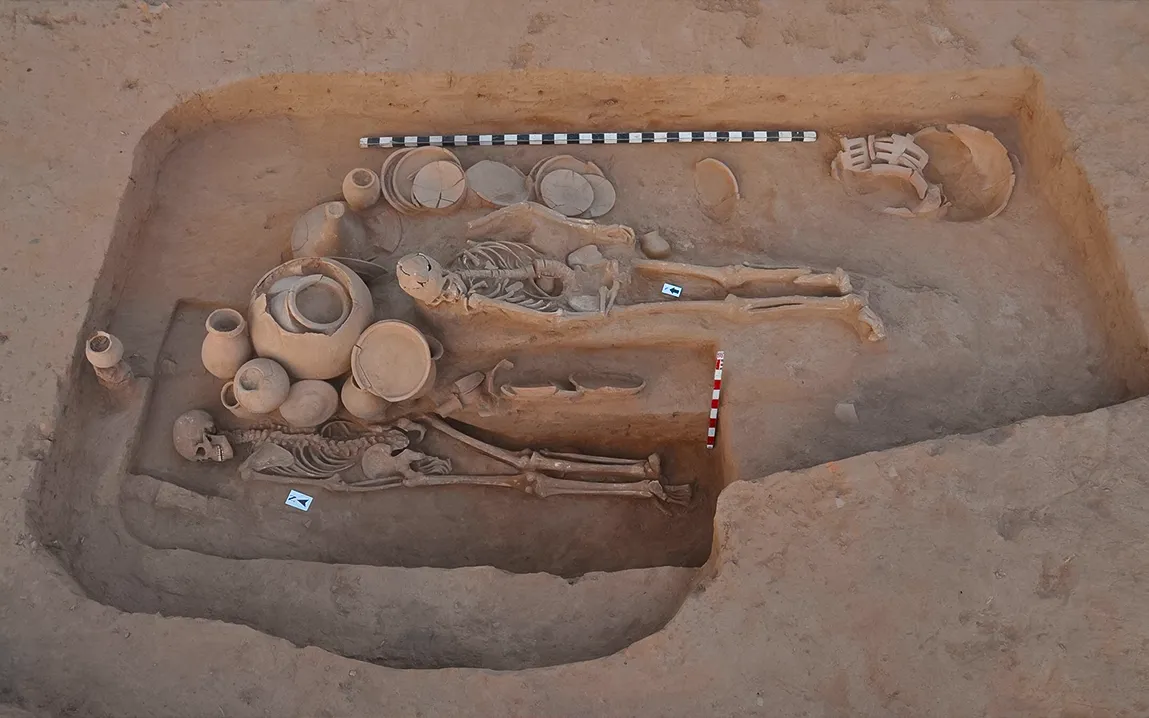Agriculture marked an important chapter in human history—increasing settled farming communities from nomadic hunter-gatherers. This transition is called the Neolithic Revolution—not only changing societies but also making permanent marks on the earliest Europeans’ genetic makeup. Recent developments and discoveries in the ancient DNA of early humans reveal how these people made their best adaptations in different surroundings, offering deep insights on human culture and lifestyle in genetics.
The Neolithic Revolution: A Turning Point
About 10,000 years ago, human groups went through a transition from food collecting to food producing. There are evidence of this because their change of abode from nomadic type of life to stationary dwelling led to the development of clans and herds, domestication of plants and animals respectively. Climates and territories of Europe affected early farming communities to develop as a jigsaw; every area was special in its own way.
Genetic Insights from Ancient DNA
Ancient DNA research has transformed our understanding of human history. Scientists can reconstruct the genetic profiles of ancient populations, trace migrations and interbreeding events, and observe adaptations over millennia by extracting and analyzing genetic material from archaeological remains.
Migration and Genetic Mixing
One of the biggest surprises from ancient DNA research is the extent of migration and genetic mixing during the Neolithic period. European farmers, primarily spread from the Near East, introduced new agriculture systems that conquered large areas in Europe, resulting in diverse levels of intermingling with indigenous hunter-gatherer groups.
For example, in Central Europe, genetic studies indicate large incursions of Near Eastern farmers who interbred with local hunter-gatherers, followed by the creation of admixed populations with both ancestry components. In other regions, such as parts of Scandinavia, there is little evidence of such genetic admixture and associated recombination; here, local hunter-gatherer populations appear to retain more distinct genetic identities as farming expands.
Changes to New Diets and Ways of Living
With a new agricultural lifestyle came new dietary staples and living conditions, which brought forth genetic adaptations in early European populations. Lactase persistence provides an interesting example of such a dietary adaptation: the ability to digest lactose, a sugar found in milk, into adulthood. Most mammals lose this ability after weaning, but certain human populations developed mutations that allowed for continued lactase production. This adaptation served to confer a nutritional benefit in farming communities that domesticated dairy animals.
Another critical adaptation was skin pigmentation. When early farmers went on to colonize Europe, they moved into regions having low ultraviolet radiation. It became advantageous to have lighter skin pigmentation for allowing the synthesis of vitamin D in the reduced ultraviolet radiation conditions. Through genetic analyses, researchers have been able to detect mutations linked to lighter skin that became dominant in European populations during the Neolithic period.
Immune System Evolution
The creation of dense farming communities and intimate association with domesticated animals introduced new pathogens, thus exercising selective pressures on the immune systems of early Europeans. Genetic analyses have identified changes in immune-related genes and suggest adaptations to diseases that arose with settled agricultural lifestyles. These adaptations demonstrate the dynamic relationship between human societies and their environments, influenced in equal measure by cultural practices as genetic evolution.
Ancient Pathogens: End
Recent studies have uncovered the presence of ancient pathogens in Neolithic populations, shedding more light on the health challenges early farmers faced. For example, through DNA evidence, researchers have now revealed strains of Yersinia pestis, the bacteria that causes plague, in ancient European remains. These findings suggest that early farming communities may have had outbreaks of diseases that had a tremendous impact on their populations, in turn affecting genetic adaptations related to immunity.
Cultural and Social Implications
Genetic adaptation in early European populations was not a purely biological response but occurred interlocked with cultural and social practices. As the spread of farming techniques, dietary habits, and settlement patterns affected selective pressures governing genetic evolution, the adoption of dairy farming opened up a niche for lactase persistence to become advantageous, while social structures within communities influenced patterns of genetic mixing and diversity.
Implications for Modern Times
Understanding the genetic adaptation of early Europeans thus brings a lot into modern health and disease. Most of the genetic traits that appeared during the Neolithic period continue to influence modern populations. For example, variations in skin pigmentation genes affect susceptibility to conditions like skin cancer and deficiency of vitamin D. Similarly, lactase persistence has implications for dietary choices and lactose intolerance in various populations.
Moreover, studying ancient DNA increases our knowledge of human resilience and adaptability. It underlines the ability of human populations to have genetic change in anticipation of and response to environmental challenges, providing some useful information for solving the current and future health issues.
Conclusion
The discovery of ancient DNA has opened a window into the lives of early Europeans at the dawn of agriculture. It gives a story of migration, adaptation, and interaction between humankind and the human environment. Because of its ability to strengthen our knowledge of ancestors’ genetic tapestry, their culture and lifestyle become intertwined with biology and how this has shaped human evolution. This knowledge enriches our comprehension of the past but also informs our approach to health and adaptation in the present and future.



